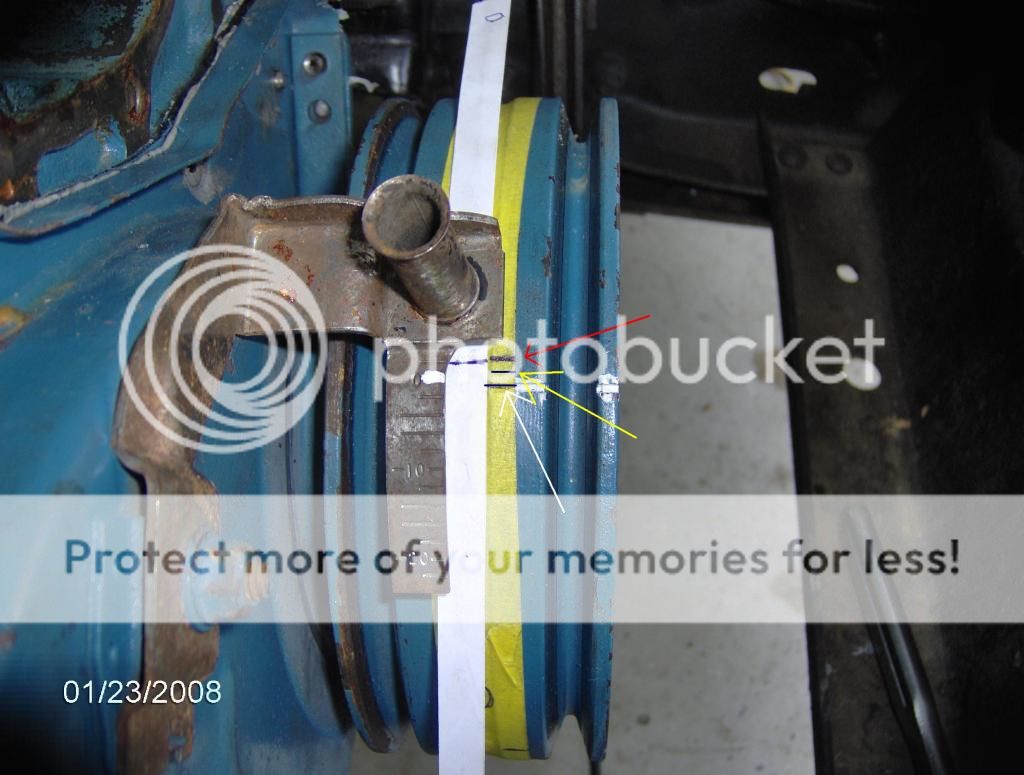In the past I had shown pictures of my dampener on the slant forum and Dusteridiot made this comment...........I have a 1983 heavy duty truck slant six (I removed it from a 1983 D-150 NP435 truck), it's never been apart in it's life and it has that style of damper. I had another one from a 1981 D-150 I kept as a souvenir until I dropped it and it cracked in half. These are for heavy duty use (i.e. D-150 and industrial slants)
The blue dampener ( 3 spoke ) is truck # 1 and is the one that is pretty far off, you can see what I am assuming are machining for balancing.
The other two slant 2 wheel drive trucks have this same style ( 6 spoke ) ( dirty balancer ) which have no machining on their faces.
Damperdudes have various styles, I do not see one offered identical to mine. I will call on Mon. to see what might be the best route to take.
The blue dampener ( 3 spoke ) is truck # 1 and is the one that is pretty far off, you can see what I am assuming are machining for balancing.
The other two slant 2 wheel drive trucks have this same style ( 6 spoke ) ( dirty balancer ) which have no machining on their faces.
Damperdudes have various styles, I do not see one offered identical to mine. I will call on Mon. to see what might be the best route to take.

















